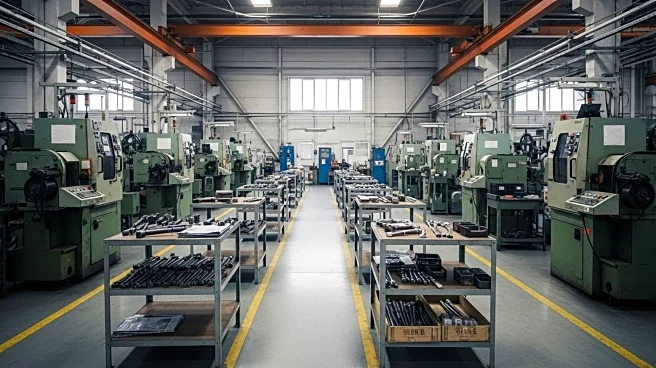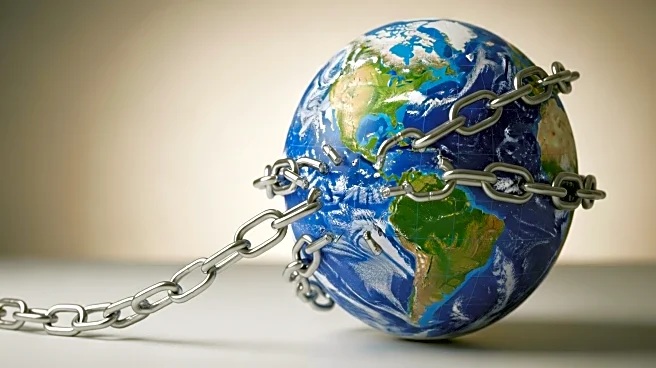What's Happening?
Preliminary data indicates that over 1.2 million immigrants have exited the U.S. workforce between January and July, largely due to President Trump's immigration policies. Immigrants constitute nearly 20% of the U.S. labor force, with significant representation in sectors such as farming, fishing, forestry, construction, and services. The decline in immigrant participation is attributed to both voluntary departures and deportations initiated by the Trump administration. The Bureau of Labor Statistics corroborates this decline, estimating a similar drop in workforce numbers. The administration's focus on deportation has led to labor shortages in critical sectors, including agriculture and construction, where immigrants play a vital role.
Why It's Important?
The reduction in immigrant workers poses significant challenges to various U.S. industries, particularly agriculture and construction, which rely heavily on immigrant labor. The shortage of workers could lead to increased project delays and affect the availability of home healthcare services, where immigrants make up a substantial portion of the workforce. This situation raises concerns about the ability of these sectors to meet demand and maintain productivity. The broader economic impact includes potential increases in labor costs and disruptions in service delivery, affecting both businesses and consumers.
What's Next?
The ongoing immigration policies may continue to affect workforce availability, prompting industries to seek alternative solutions to address labor shortages. Companies might increase efforts to recruit domestic workers or invest in automation to mitigate the impact. Additionally, there could be increased advocacy from industry groups and labor unions urging policy changes to stabilize the workforce. The administration's stance on immigration is likely to remain a contentious issue, influencing future political debates and policy decisions.












